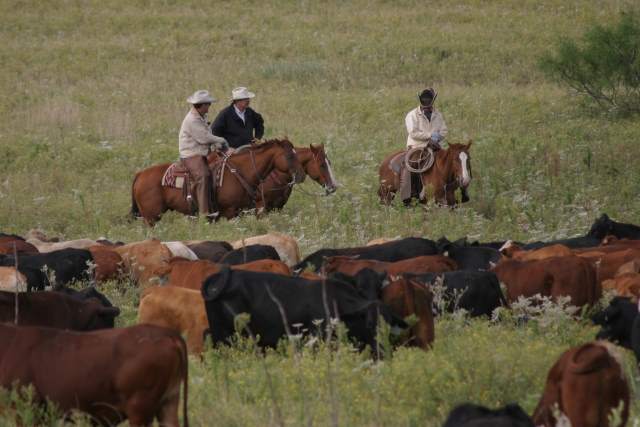December 9, 2014

“There’s never been a better time to be in agriculture.”
That’s how Lowell Catlett, dean of the College of Agriculture at New Mexico State University and one of the most entertaining futurists you’ll ever listen to, kicked off his talk last month at the Angus convention in Kansas City. And in his own way, he made a very convincing argument. Note—while I can report what he said, I cannot convey how he said it. For that, you just have to be there. It’s well worth the price of admission.
What he said is this: In 1970, the world had 3.6 billion people and the U.S. became the world’s first $1 trillion economy. The rest of the world produced a sum total of $4 trillion. And in 1970, the world could not feed itself.
“We couldn’t provide for those 3.6 billion people the 2,450 calories needed on average for normal body maintenance. Oh, we did quite nicely in the U.S. and Canada and a few countries in Europe. But the world’s agriculture could not feed itself,” he told Angus breeders.
The second-largest world economy in 1970 was Great Britain with an output of $250 billion. In 1970, China, India and Brazil had half of the world’s 3.6 billion people, yet their combined economic output was less than that of the second-largest economy in the world.
Back then, a group of well-meaning people got together and formed the Club of Rome in an effort to try to predict the world’s future and ultimate fate. Their predictions were dire. They forecast a world population of 12 billion people and catastrophic collapse because the world’s resources were running out.
“But they forgot something,” Catlett said. “Money changes people. When people get more money, what’s the first thing they do? They quit having quite so many kids. So we’re now at 7.2 billion people,” he said.
“Guess what agriculture did in the last 10 years?” he asked the audience. “We now can provide, for every one of those 7.2 billion people, 2,900 calories. That’s phenomenal. I call it world wealth. Everybody got a little more money.”
Clearly, those 2,900 calories aren’t evenly distributed. But the world is getting better at that, too. Ten years ago, there were 2 billion people in the world who lived in impoverished environments on less than $1.25/day, he said. “It’s now 750 million—the fastest drop in any 10-year recorded period in history. It’s still tragic that 750 million people in the world are living on less than $1.25/day. But look at the trend.”
And consider this: Last year, world economic output of 195 countries was $70 trillion. The U.S. was still the number one economy in the country by a long shot. China was second at $7 trillion and Japan was third at $6 trillion.
The prediction that we’ll hit 9 billion people by 2050 has been well-reported for several years. Many have worried, if that prediction comes true, that the world won’t be able to feed itself.
They are wrong for the same reasons that the folks back in the 1970s were wrong—both in the prediction about total world population and the world’s ability to feed itself.
While we can debate the numbers, world populations will without a doubt continue to rise. But populations have a tendency toward self-limitation and the innovations we’ve seen in agriculture give me confidence that we will rise to the challenge.
The world is getting wealthier. We’ve known for a while now that when people lift themselves out of poverty, one of the first things they do is change their diet to include more meat protein.
Catlett is indeed right—there never has been a better time to be a cattle producer.
You might also like:
NEW GALLERY: 50 Holiday HATitude® Photos From Readers
Winter Feed: Do You Have Enough To Feed Your Cows?
Beef cattle genomics come full circle
Nothing about the U.S. cattle market should surprise us any more
6 Tips For Buyers & Sellers At A Cattle Sale
You May Also Like



